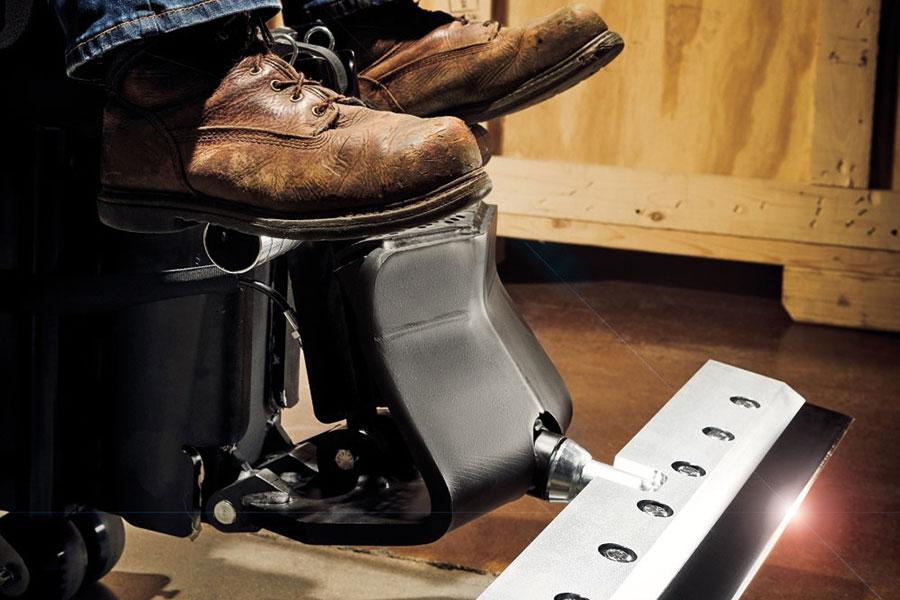To help contractors expand their tooling portfolio and achieve effective surface preparation, Becky Duncan highlights the importance of tooling variety.
NO one likes to admit when they don’t have the right tools for the job, but what if they don’t know there are better tools out there? There are many different tooling choices available for contractors, but it’s difficult to know which is best.
To help contractors expand their tooling portfolio and achieve effective surface preparation, here I’ll highlight the importance of tooling variety.
Before heading to a job, contractors take their time inspecting the job site, making sure they pick the best scraper to remove floorcoverings. Tooling choice, however, is often missed as people just use whatever tools come with their machine, then struggle to remove the flooring effectively. When crews find it difficult to remove materials, it’s easy to blame it on the machine, but more often than not it’s owing to poor blade choice. So why do contractors struggle with tooling?
The ‘safe’ option
One of the key reasons why tooling is missed is simply down to lack of knowledge. When it comes to scraper choice, most machines are versatile enough to be used on a variety of applications. However, most blades cannot be used for just any material.
Suppliers will typically recommend based on what contractors are removing. For example, shanks are best for removing hard goods as the angle of the tool allows users to slide it underneath the floor and lift larger pieces, rather than chipping off small areas, reducing removal times without compromising on accuracy. However what contractors use their machine for can change quickly based on the types of projects they take on, so it’s important to know what other tooling choices are available.
The biggest misconception we hear from our customers is that the bigger the blade, the more floor it will remove, but this is not the case. In reality, shorter blades deliver more pressure per square inch that allow them to break through harder materials and adhesives more easily. For example, a six inch blade can remove vinyl composition tile better than a 12 inch.
Shorter blades are designed for materials with strong bonds between the flooring and concrete, while longer blades risk becoming dull owing to excessive pressure on the blade’s edge.
By working with machine suppliers, contractors can discover which blades are most suitable for the job and tips to keep them in good condition. While it may seem more appealing financially to purchase one or two for a specific application, it’s better to get a variety of blades so that contractors are always prepared.
The right angle
I often receive customer phone calls claiming their machines don’t work. Yet, when we look deeper into the issue, the machine is fine, they’re just not using the right tooling or it’s at the wrong angle and pitch. Increasing the angle between the machine blade and floor is typically a sign blades should be sharpened or replaced but it can also help remove flooring more effectively.
Adapting the pitch and angle of the floor scraper blade can speed up the floor removal process. If the machine keeps riding up over the flooring, increasing the angle of the blade will offer more down pressure. Difficult floor removal will require a higher pitch, so it’s important to make sure the right tooling is used with the increased down pressure.
Maintaining uptime
It’s easy to think that a machine is faulty if floor isn’t easily removed. If blades are continually used incorrectly, they’ll become dull much faster and even break, which can add unnecessary time to project lengths. We commonly see those fairly new to the industry complain that their machine won’t work, but the blades simply need sharpening.
Dull blades can be owing to wrong use or overuse. Contractors may be using their blades correctly, but not taking the time to re-sharpen them in between jobs. Some blades must be replaced once they become dull, so contractors should always keep spare tools on hand to avoid extending project times.
It can be difficult to know if the tools you’re using are the best for the job if you’re unsure of what else is out there. But it’s important for contractors to expand their tooling portfolio so they’re prepared for any future projects without risking the integrity and effectiveness of their current blades.
www.nationalequipmentdirect.com
Becky Duncan is regional sales associate at surface preparation experts National Flooring Equipment


